#dorothea weston
Explore tagged Tumblr posts
Text
The Arbour, Dove Nest, Rydal, Cumbria
This unassuming little garden arbour has provided shelter for some of the greats of the 19th century – although the name of only one will be widely recognised today. It was built as a retreat in the grounds of a little villa called Dove Nest, which overlooked the great lake of Windermere. Continue reading The Arbour, Dove Nest, Rydal, Cumbria
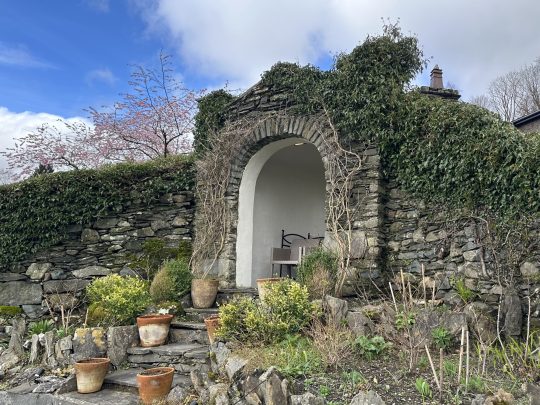
View On WordPress
#Adam Walker#Casabianca#Charles Lamb#Dove Nest#Ellen Weston#Felicia Dorothea Hemans#lake district#Rydal Mount#The Samling#William Wordsworth#windermere
1 note
·
View note
Text
coppie (02)

© Elliott Erwitt [*] Brasile (1963)

© Dorothea Lange [*] NYC (1952)

[*]

© Edouad Boubat [*] Parco di Saint Cloud - Parigi (1982)

[*]

© Edward Weston [*]
https://it.pinterest.com/
https://www.tumblr.com/iamscotlandyard65/
https://infatuateur.tumblr.com/
https://www.tumblr.com/uconstruction/
https://tumblrgallery.xyz/
https://hollandersecondo.tumblr.com/
4 notes
·
View notes
Text
Ten first lines
I saw this tagging game going around and wanted to have a go!
Rules: List the first line of your last 10 (posted) fics and see if there's a pattern.
Playing Their Cards Right
Elizabeth could think of nothing more to say, and an awkward silence fell between her and Mr Darcy.
2. The Beginning and End of a Very Brief Freindship
Lady Dorothea, as she was ushered into Philippa Lindsay’s parlour, felt all the awkwardness of her situation.
3. Sailor Boi
He was a boy, she was a girl.
4. When Life Closes a Door
Elizabeth glanced up at the sound of a page being turned.
5. Love Thy Neighbours
”Well!” sniffed Mrs Elton as soon as Mr Weston had left the vicarage parlour.
6. So Happy a Summer
The arrival of a new resident always arouses some curiosity in a country neighbourhood.
7. Gold and Tinsel
It is a truth not often enough acknowledged that hard work and courage are rarely given the public recognition they deserve.
8. Heliotherapy
“Sun-bathing?” said Mr Woodhouse, peering dubiously at Mr Perry over his teacup.
9. Five Quarters of a Dozen
It took less than a minute for Mr Collins to transfer his matrimonial hopes from the eldest Miss Bennet to the second eldest.
10. On the bank of the green river, long ago
It was a hot late-summer day, and the stream running through Pemberley’s grounds seemed to have been infected by the sense of lethargy pervading the air.
I can see some trends here, for sure! Most of these lines contain a reference to at least one character – generally one of the central characters of the story, though Heliotherapy gives the spotlight to two side characters instead. Looking at these, I also feel that I have a tendency to be kind of wordy in my opening lines. No snappy, punchy openings here! (Well, there's Sailor Boi, but that's 1. filk and 2. a borrowed line, so it doesn't really acquit me.) Also, I think it's noteworthy that my two latest opening lines both have the point-of-view character feeling super awkward. :D
I am glad to see that there's also some variety, though! Two fics dive right into dialogue, two start with sweeping observations on the nature of humanity (or at least country neighbourhoods), and there's even one nature description. Not too shabby!
I will tag @wurzelbertzwerg, @newnotebook, @kissed-by-circe, @storytilly and anyone else who sees this and would like to play. (No pressure, though – only if you want to!)
4 notes
·
View notes
Text
What would become a life-long study of the nude began in 1934 when Bernhard asked a dancer friend to pose in a large industrial stainless steel bowl. Her first photographic monograph, The Eternal Body (1986), a collection of fifty nudes, remains an influential work on nude photography. In 1935, after meeting her mentor, photographer Edward Weston (1886–1958), in Carmel, California, Bernhard became interested in the the work of West Coast photographers, such as Ansel Adams, Imogen Cunningham, Dorothea Lange, Minor White, and Wynn Bullock. After spending time in Los Angeles in the mid-1930s, where her first solo show appeared at the Jake Zeitlin Gallery in 1936, Bernhard moved to Carmel in 1944 and later settled in San Francisco in 1953. There she would reside for the rest of her life. Many of her best known photographs date from the 1950s and 1960s, including Classic Torso (1952), In the Box, Horizontal (1962), and Two Forms (1963). From 1961, Bernhard led workshops and courses at the University of California Extension Program, the Ansel Adams Workshops in Yosemite, the John Sexton Workshops in Carmel, as well as international master classes. Her printers Michael Kenna and Saïd Nuseibeh continued to produce prints from her negatives. Bernhard devoted herself increasingly to teaching photography after her near-fatal carbon monoxide poisoning in the mid-1970s and remained active as an educator well into her 90s.
0 notes
Text
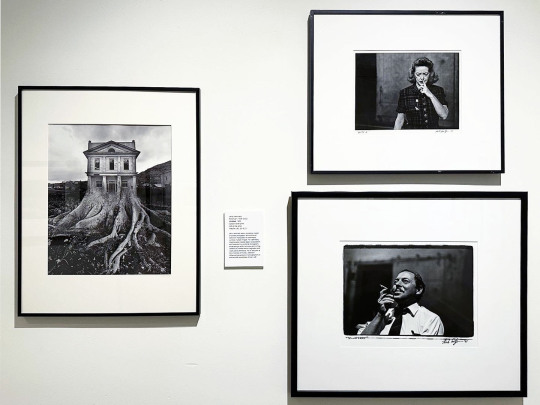
Photographs by Jerry Uelsmann (left) and Herb Snitzer (right)-“Bette II”, top and “Tennessee Williams”, bottom)

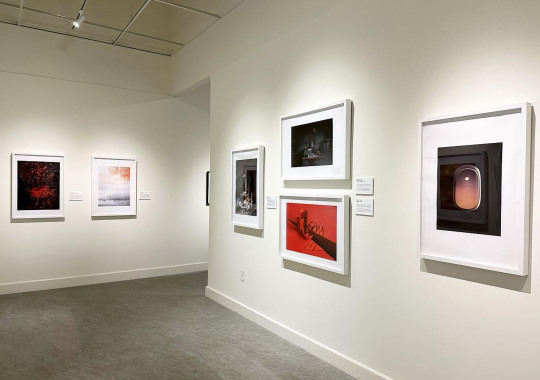
(Photographs from the International Photography Competition)
Continuing from the previous post about the Ybor Arts Tour, there are three venues that were part of the tour that are also worth highlighting.
The Florida Museum of Photographic Arts (FMoPA) is showing some impressive photography in their new Ybor City space. On one side of the museum is Icons of Black and White, a selection of over 60 fine art photographs, by some of the most famous photographers in history including Ansel Adams, Dorothea Lange, Edward Weston and more. This show will be on view until 12/3/23.
In the FMoPA Community Gallery are the winning photographs from the 2023 International Photography Competition, previously on view at The Tampa International Airport. This exhibition closes 10/28/23.


Kaitlin Crockett of Print St. Pete, “Why?” letterpress monoprint (left) and Chris Sellen/ Kaitlin Crockett, “It’s Only A Matter of Time”, risograph print
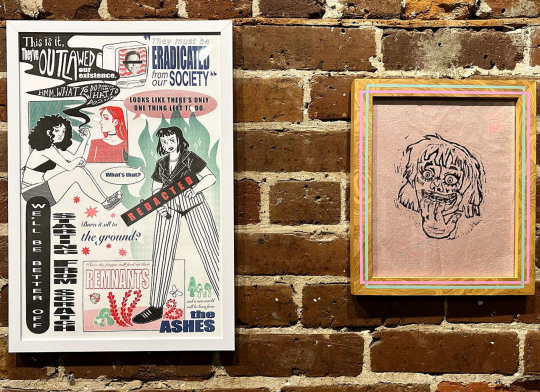
Mia Makes It, “[redacted]”, risograph print, and “Molecular Anxiety”, linocut on fabric
The Bricks is a restaurant in Ybor City that also has an event space. For the Arts Tour the space turned into a gallery for Print Mode (2) a selection of work by Tampa Bay printmakers. That show will be up for a few more weeks.
Marcolina’s (seen below) is a relatively new gallery currently showing the group exhibition EDEN: Beyond Paradise until 11/30/23. Check out their Instagram and Facebook to see upcoming events like Nude Model Life Drawing (every third Wednesday) and Deidre Kling’s “The Haunted Flesh” Photography Book Release on 10/28.
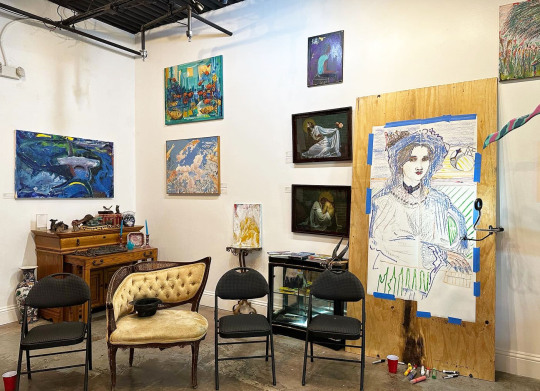
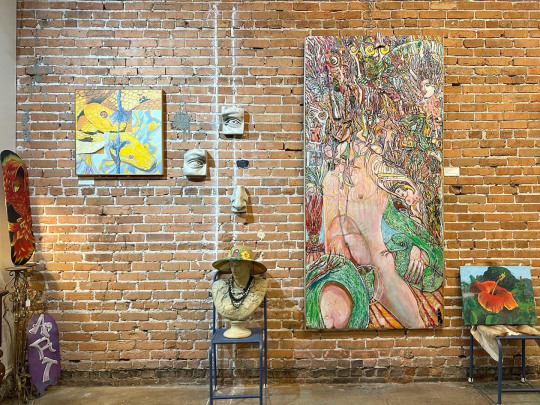
#Ybor Arts Tour#Florida Museum of Photographic Arts#The Bricks#Art#The Bricks Ybor#Art Show#Marcolina's Fine Arts Gallery#Benjoblocks#Black and White Photography#Chris Sellen#Deidre Kling#Florida Art Shows#Florida Artist#Florida Artists#Florida Museum of Photography#FMoPA#Herb Snitzer#International Photography Competition#Jerry Uelsmann#Kaitlin Crockett#Marcolina's#Marcolina's Gallery#Mia Makes It#Mike Toth#Photographers#Photography#Print St. Pete#Printmaking#Printmaking Studio#Tampa Art Shows
0 notes
Text
Las paredes tienen dos pies y medio de espesor

El asilo para lunáticos Trans-Allegheny, anteriormente conocido como The Weston State Hospital, o el West Virginia Hospital for the Insane sería intimidante incluso sin los fantasmas. Su monumental estructura principal, el edificio de mampostería de piedra cortada a mano más grande de América del Norte, divide 242,000 pies cuadrados en cuatro pisos, tiene una asombrosa longitud de 1,296 pies y está equipado con 921 ventanas y 906 puertas. Una torre de reloj de 200 pies de altura se extiende desde el centro como una mano que se acerca a Dios. Las paredes tienen dos pies y medio de espesor, lo suficientemente densas como para amortiguar los gritos incluso del alma más atormentada, viva o muerta. Asilo de lunáticos Trans-Allegheny A raíz de una ola reformista impulsada por todo el país por la notable defensora de la salud mental Dorothea Dix, la Asamblea General de Virginia asignó la suma principesca de $125,000 para construir el Asilo de lunáticos Trans-Allegheny a principios de la década de 1850, con la compra de 269 acres a lo largo del río West Fork frente al centro de Weston. Dr.
0 notes
Photo

Well, I decided to play around with some art styles awhile back and I ended up doing this thing. The huge eyes I put on Dorothea bothered me tho so I think it's time to go back to my usual oof. But hey! Here's Mercutio's ghost form without the gas mask (which is a bad idea on his end cause he needs that to breathe.) and Dorothea taking a selfie after they do some patrols around Amity Park. And yep, that mist from Mercutio's mouth is his breath, he has really strong ice powers that don't always cooperate with his body
#Danny phantom#danny Phantom ng#danny Phantom nextgen#Danny Phantom oc#fan character#fankid#next gen au#dp#dpoc#dp oc#dorothea weston#mercutio fenton#my art#Underground au
2 notes
·
View notes
Photo

At long last — our first acceptance! We’re so excited to welcome all of our new members to Westerly, and hope everyone has a great time immersing themselves in the relaxed, easy-going atmosphere we have strived to create. We want to thank everyone who has applied and shown interest in the group, and we’re thrilled to get things started in our little coastal oasis! Under the cut are the accepted members for the applied for skeletons.
For those of you who have been accepted, you have 48 HOURS to get your account to the main page. Once you have it made, send in a message letting us know, and we’ll get you connected to the discord chat. Take a peek at the NEW PLAYER’S CHECKLIST. We are now officially open for interacting and posting on the dash, check out our EVENT POST for information regarding our opening event.
TIS THE DAMN SEASON — Theodore “Theo” Jackson, Garrett Hedlund, penned by Lindsey
SEVEN — James Breckenridge, Minka Kelly, penned by Melanie
COWBOY LIKE ME — Nicolas “Nico” Rubio, Peter Gadiot, penned by Jam
NO BODY, NO CRIME — Anika Shaw, Zazie Beetz, penned by Mason
EPIPHANY — Ryder Dillon, Jesse Williams, penned by Bethany
RIGHT WHERE YOU LEFT ME — Wyatt Carter, Casey Deidrick, penned by Steph
BETTY — Eleanora Kingston, Florence Pugh, penned by Ace
IVY — Samuel “Sam” Breckenridge, Timothy Olyphant, penned by Mak
CONEY ISLAND — Halcombe Seo, Choo Jahyun, penned by Alicia
DOROTHEA — Kimmi Valle, Ana De Armas, penned by Hanna
THIS IS ME TRYING — Weston Albott, Chris Evans, penned by Kenz
INVISIBLE STRING — William Becker, Oliver Jackson-Cohen, penned by Lizzie
HOAX — Lamar Davis II, Michael B Jordan, penned by Meg
TOLERATE IT — Maya Santiago, Victoria Justice, penned by Lynn
MARJORIE — Elenor “Nori” Hoffman, Zoey Deutch, penned by Kore
MIRRORBALL — Zoe Valiente, Adria Arjona, penned by Ella
THE LAKES — Loch Osorio, Sofia Carson, penned by Rachael
LONG STORY SHORT — Ashley “Ash” O’Neill, Will Poulter, penned by Laine
GOLD RUSH — Lennon Harlow, Margot Robbie, penned by Kara
3 notes
·
View notes
Text
Women in photography

In 1955, the Museum of Modern Art put on what may very well be the most famous photography survey of all time, “The Family of Man.” It assembled a who’s who of 20th century talents—Henri Cartier-Bresson, Roy DeCarava, Ansel Adams, Edward Weston, Garry Winogrand, and August Sander. The show’s demographics, however, left something to be desired: of the 251 artists included, fewer than 40 were women.
A new show opening today at the Metropolitan Museum of Art continues recent efforts to reinsert women into the history of photography. Organized by Andrea Nelson and Mia Fineman with Virginia McBride, “The New Woman Behind the Camera” features 120 women photographers working during the 20th century. Its focus is not only Western artists who are already well-known, such as Dorothea Lange and Claude Cahun, but also under-recognized artists from other parts of the world whose work has been influential.
Below, a look at five under-recognized artists included in the Met show, which is slated to travel to the National Gallery of Art in Washington, D.C. after its run in New York.
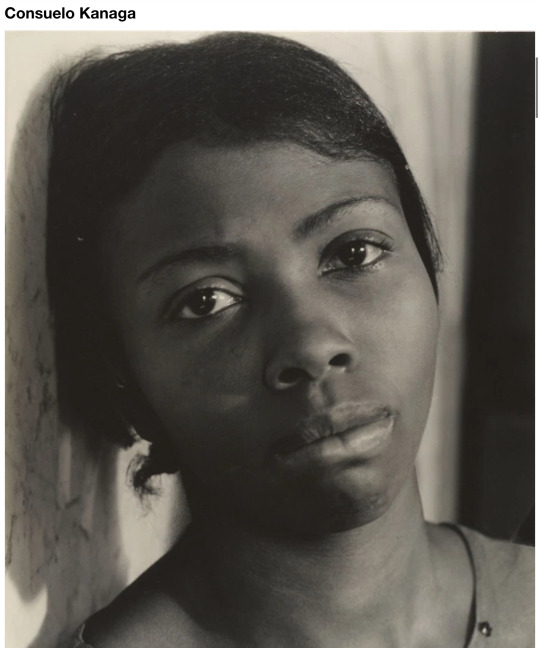
When Consuelo Kanaga died in 1978, the New York Times called her “one of the foremost women photographers of her time.” By 1993, however, when the Brooklyn Museum devoted a retrospective to her, Kanaga’s reputation had faded to a point where curator Barbara Head Millstein took to the Times’ Opinions page to write that “her transcendent images have never received the acclaim they deserve.” Even today, Kanaga is nowhere as near as famous as some of the artists she counted as friends, among them Imogen Cunningham, Alfred Stieglitz, and Tina Modotti. This is due partly to Kanaga’s disposition—she wasn’t one for self-promotion—and partly to the nature of her work: her understated portraits of Black Americans did little to announce themselves as the great, empathetic images that they are.Kanaga took up photography at a time when its artistic merits were still subject to debate. At age 21, she began writing for the San Francisco Chronicle, spending time in the paper’s photo department, where she learned darkroom techniques. In 1932, she fell in with a circle of Bay Area photographers known as Group f/64, whose members included Cunningham, Ansel Adams, and Dorothea Lange. While not officially a part of the group, Kanaga, like its other members, was interested in a kind of photography that celebrated quotidian moments and everyday people—a sharp departure from the day’s reigning style, Pictorialism, which prioritized rigorous compositions over documents of everyday life.In the years that followed, Kanaga began creating her signature portraits of Black sitters—an unusual move at the time for a white photographer. She Is a Tree of Life to Them (1950), her most famous work, features a Black mother with her two children pictured against a concrete wall. (It was featured in Edward Steichen’s famed 1954 MoMA show “The Family of Man.”) The photograph exemplifies Kanaga’s approach, highlighting her subjects’ piercing gazes and using light in subtle elegant ways. It was the inner lives of her subjects that Kanaga sought to capture. “Most people try to be striking to catch the eye,” she once said. “I think the thing is not to catch the eye but catch the spirit.”
To an untrained eye, Karimeh Abbud’s photographs may not have read as art—and in fact, they were often made for commercial purposes first. But, with her studio portraiture, the Palestinian photographer charted a path that others have followed in the decades since she died in 1940.For historians, her work remains important because it marks a milestone: Abbud is believed to be the first woman photographer in Palestine, and possibly even one of the first woman photographers in the Arabic world. Yet her work remains little-known, and it did not even become the subject of a museum exhibition until 2017, when Darat al Funun, an art space in Ammann, Jordan, staged a survey based on works from the collection of Ahmad Mrowat, a major collector of Abbud’s work.Born in Bethlehem in 1893, Abbud became a photographer in the 1920s, turning her lens on the women and children around her. Later on, she would go on to open studios in various locations, including Jerusalem and Nazareth, and create portraits that pictured her sitters as they were. In a decisive break from the ethnological portraiture by Europeans that had long been dominant in the region, Abbud created images “of normality, of people appearing at their best, but within a middle-class context,” as scholar Issam Nassar has written. She chose not to hide her gender, and she even advertised herself as a “Lady Photographer.”
Homai Vyarawalla, India’s first female photojournalist, often took a matter-of-fact approach to her work: asked why she took up photography, she’d say, “It was just a job.” Yet the stunning pictures she took of India during a transitional period in the middle of the 20th century make it hard to imagine she didn’t have a more poetic intent.With her striking shots, Vyarawalla bore witness to the leadership of Prime Minister Jawaharlal Nehru, whom she befriended after he noticed her taking pictures, and the activism of Mahatma Gandhi. Anytime there was an important event taking place in the country, she could be found on the scene, often wearing a sari or a salwar (she declined to dress in Western garb as an assertion of her Indian national identity). In the process, she became widely known in India and respected as one of the great recorders of the country’s history.At the start of her career, though, her name was hardly known. This was, in part, because she was publishing photos under the name of her husband, Manekshaw Jamshetji Vyarawalla. Gradually, she began demanding recognition for her work, and when she got a job with the British Information Service in the ’40s, she demanded payment of a rupee per shot. In the years leading up to Vyarawalla’s death in 2012, filmmaker Sabeena Gadihoke helped revive interest in her work.
Once dubbed the “Queen of Leica,” Ilse Bing was one of the top photographers working in Europe during the pre–World War II era. She got that nickname from the tiny Leica camera she toted around with her, which she used to capture off-kilter images of modernity that often emphasize diagonal compositions. Through her lens, puddles on city streets, shadows thrown across ledges, and crowds traversing plazas become bracing visions of modernity’s changes to society, and its fast pace.
Bing initially intended to become an art historian, and her first photographic forays were done as part of her doctoral thesis during the ’20s. After Mart Stam, an architect aligned with the Neue Sachlichkeit movement in Germany, hired Bing to document his angular creations, she fell in with a circle of avant-garde artists in Frankfurt. She relocated to Paris in 1930 and rose to fame, getting commercial commissions from Harper’s Bazaar and fashion designer Elsa Schiaparelli.
In 1940, Bing and her husband, both of whom were Jewish, were expelled from occupied Paris and interned for nine months. With the help of a fashion editor at Harper’s Bazaar, they both got visas and ended up in New York, where Bing remained for much of her career. Her work was fundamentally altered by the trauma of World War II, and in the ’50s, she gave up photography altogether. Her focus instead became poetry, which she considered “snapshots without a camera.”
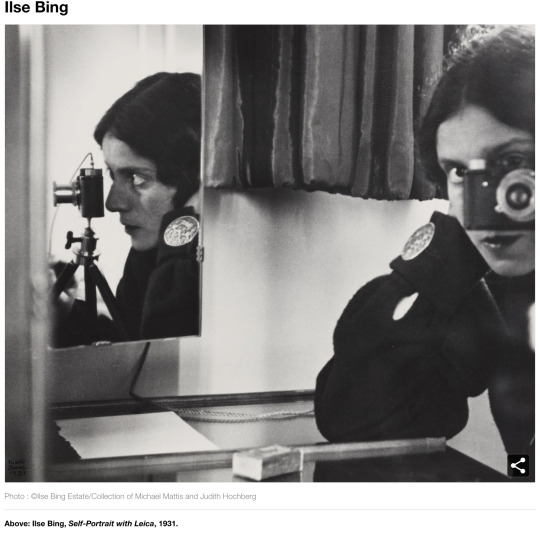
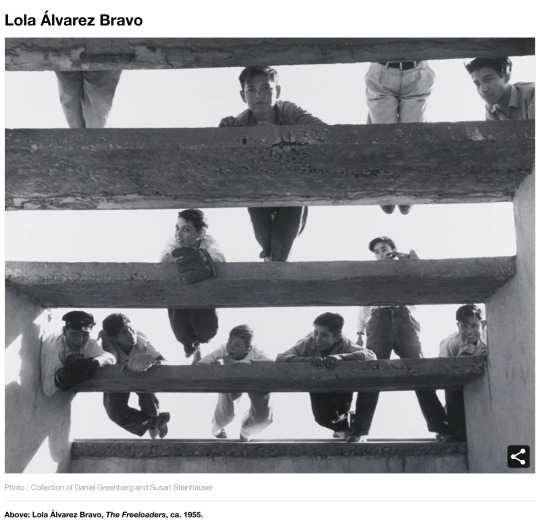
A modernist photographer whose output spanned photojournalism and more experimental work, Lola Álvarez Bravo once said that with her dynamic black-and-white pictures, she aimed to showcase “the life I found before me.” And what a life that was. Her images of Mexico, where she was born and based, are not simply documents, but something more—expressive renderings of people and the places they inhabit, filled with dramatic shadows and sharp diagonals that jut across her images. Occasionally, they also had an overt political context, such as in her images of Indigenous and poor Mexicans.
Within the U.S., Álvarez Bravo has been less celebrated than her onetime husband Manuel, who was also a photographer. (The two separated in 1934 and divorced in 1949.) The two ran in the same avant-garde circles, which included Diego Rivera, David Alfaro Siqueiros, and Frida Kahlo (who memorably appeared before her camera a number of times). At the center of the art scene in Mexico in the first half of the 20th century, Álvarez Bravo’s work was well-known among her peers, and she even acted as a gallerist for some of them.
It wasn’t until the past two decades that U.S. scholars began to take stock of her work, however. After a previously unknown trove of her prints was discovered in 2007, there has been renewed attention paid to her photographs, in particular her images that border on abstraction. At a 2018–19 survey at the Pulitzer Arts Foundation in St. Louis, for example, there was a focus on works such as Sexo vegetal (Plant Sex, ca. 1948), in which a close-up shot of a maguey plant comes to appear like genitalia. Álvarez Bravo called non-commerical works such as these “mis fotos, mi arte.”
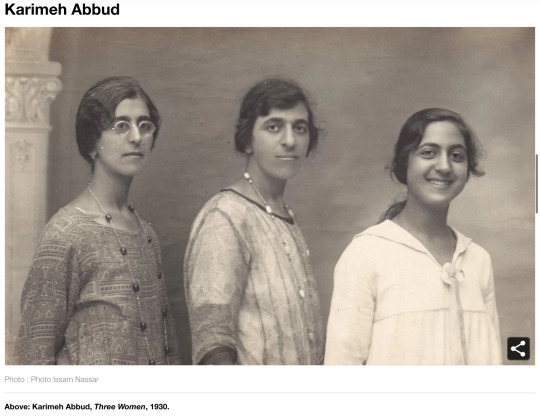
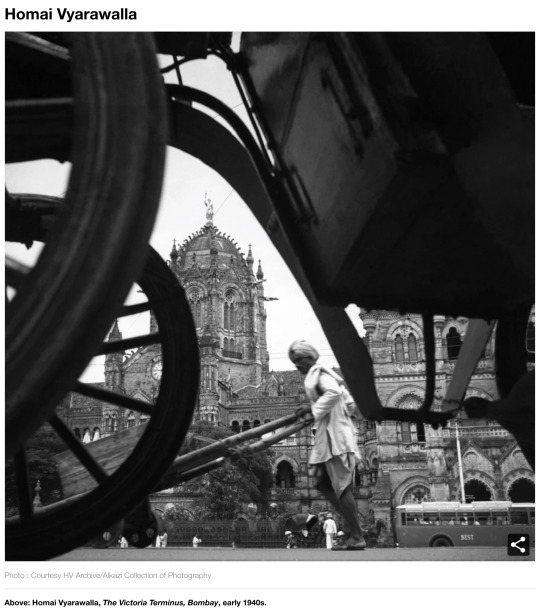
#Metropolitan Museum of Art#“The New Woman Behind the Camera”#Women in art#Consuelo Kanaga#Karimeh Abbud#Homai Vyarawalla#Ilse Bing#Lola Álvarez Bravo
17 notes
·
View notes
Text

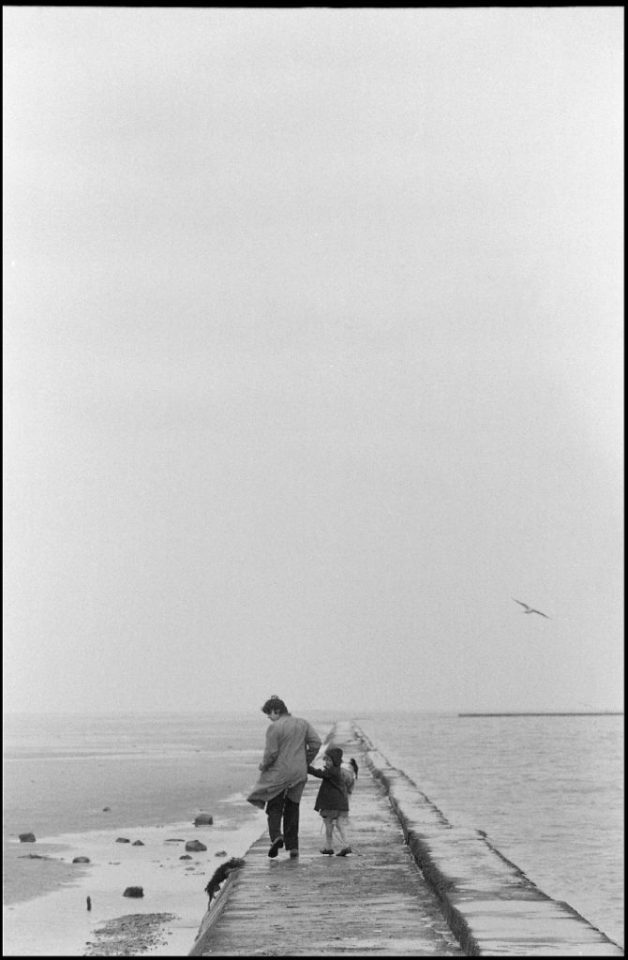
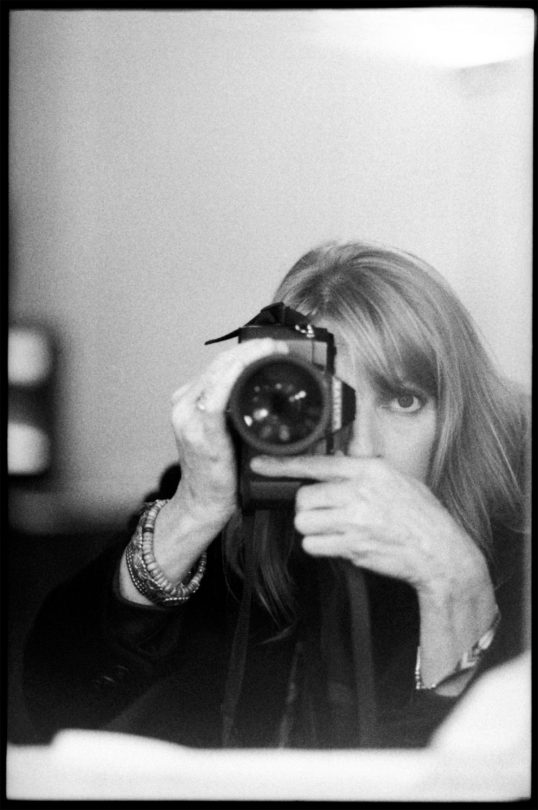
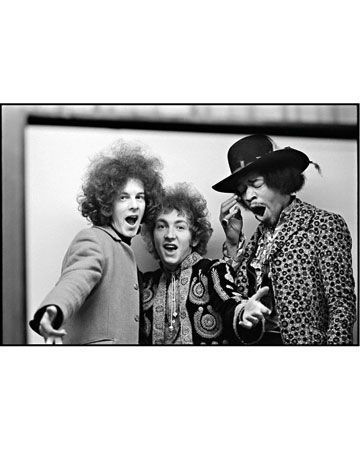
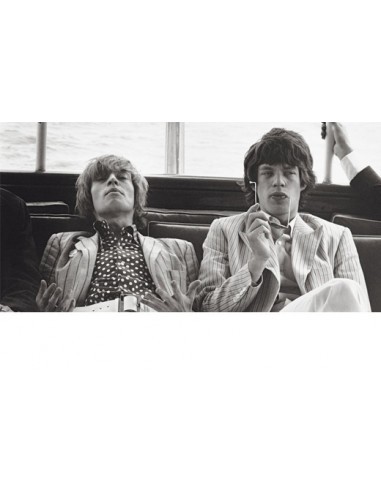

Linda Louise McCartney (de soltera Eastman) nació en Scarsdale, Nueva York, el 24 de septiembre de 1941. Se graduó de Scarsdale High School, Westchester County, Nueva York en 1960, y pasó a estudiar en la Universidad de Arizona, donde se especializó en historia del Arte. Aunque su formación formal se extendió a solo dos lecciones de fotografía a las que asistió en una escuela nocturna mientras estudiaba historia del arte en la Universidad de Arizona, las fotografías de Walker Evans, Dorothea Lange y Edward Weston que descubrió allí, junto con ella. introducción posterior a la fotografía de Edward Steichen - inspiró e influyó en el trabajo de Linda. Linda también estaba fascinada por la historia de la fotografía y honró al pionero de la fotografía William Henry Fox al producir impresiones de cianotipo hechas a mano. Linda experimentó con otros procesos de impresión a lo largo de su carrera y también produjo miles de Polaroid.
3 notes
·
View notes
Text
Value: Using Light and Dark
VALUE
(noun) - A formal element of art, value refers to the range of lightness or darkness of tone or color within an image. Value becomes critical in a work which has no colors other than black, white and a gray scale. For a great example of value in action, think of a black and white photograph. You can easily visualize how the infinite variations of gray suggest planes and textures.

Gradient Value: This is the approach to using tone or "shading' which utilizes soft, blending, blurring movements from light to dark and vice versa to try to capture the effects of light on subject matter in the physical world. Light and shadow is used to created the illusion of shape, depth and texture as well as environmental illusions of light.

Rembrandt, Artists Father

Edward Weston

Dorothea Lange

Colin Kaepernick Nike ad (2018)



Robert Longo (contemporary)
Now look at the difference in the same subject matter when we switch to Graphic/Closed value, where independent shapes and areas are given distinct non-gradient values edge to edge. This effect creates greater contrast and immediacy, but sacrifices realism. This is the approach to value most frequently scene in graphic design.

Shepard Fairey



Grey scale pencil (graphic)

Grey scale pen/crosshatching

Gradient (pencil)

Gradient (pen/halftone)

Gradient pen (pointillism/halftone)

4′” x 4″ alternating pencil gradient with pen gradient.

Part ONE Part 1 7"x 9": graphic/closed value abstraction in your sketchbook
Draw two horizontal lines with two different angles across the bristol paper. Then draw one vertical line. Then draw 2 curving, looping, moving irregular lines that start at the left edge and finish to the right. Should yield 18-22. If it yields less than 15 add another line. In each shape one must create a closed value, with a maximum of 3 paper white areas left blank. The goal is to have no two adjacent areas appear to have the same value. It is a good idea to use a darker (6B) pencil for your black and dark grey areas, a 2B pencil for your mid grey tones, and to experiment with the H pencils for your lightest tones.
3 notes
·
View notes
Note
Every time you update The Bokeh Effect I stop everything I’m doing (normally getting ready for college) and I start reading (being consequently late for college). Quick question, since you’re writing a photographer fic and it seems you know what you’re writing about, you think you can recommend me some cool photographers ??? For one of my midterms I have to copy and take some photos inspired by some photographer and my knowledge on that field is zero. Anyway I LOVE YOUR WRITING ♥️♥️♥️
eoiejafsdk;loquierjf Thank you so much, this is a huge compliment!!!
So I’m an amateur photographer and never studied it seriously but I do have a few favorites that I can recommend. I mostly personally do animals, flowers, landscapes, etc., and that’s what I tend to be most drawn to but there are a couple of really amazing portrait photographers I can recommend. This may get long so I’m going to put it below a cut (with some links, mostly to artnet which sells prints but gives you a good overview, and to other sources if I can find them):
Everybody knows/loves Ansel Adams, and for good reason: he revolutionized photography and was incredibly influential in the expansion/development of the U.S. National Parks service. His use of light and perspective was paradigm-shifting and his prints still hold up.
Emma Davies is a modern photographer I really admire, she has a very clean style and her subjects are always in superb focus. She also uses light in unique ways.
Eliot Porter was incredible, basically Ansel Adams in color (and he was heavily influenced by Adams). His techniques in capturing color were groundbreaking, and yet his shots feel very approachable?
Edward Weston did still-lifes and his photography feels almost abstract. It’s very simple and yet very strange and unique at the same time, and I love it.
Dorothea Lange was a photographer who did portraits and photojournalism. Her work is beautiful and stark and almost painful at times.
Brassai did for street photography what Ansel Adams did for landscapes. He completely changed the way people used perspective and light, but mostly with people or cityscapes. Really really remarkable.
Annie Liebovitz is probably the best living portrait photographer. You’ve seen her stuff, whether you’ve known it or not. This is a skill I do not have, and her work blows me away.
Yousef Karsh is another incredible portrait photographer whose work you’ve almost certainly seen at some point.
Marina Cano is a modern wildlife photographer who has a fantastic eye that I am jealous of, lol.
Frans Lanting is another modern wildlife photographer who makes me drool. One of these years I’m going to have the money to travel the world with an expensive camera and take photos and I hope to take shots that are half as good as his.
Anyway, I hope this helps, and I am so honored you’re enjoying Bokeh!!
18 notes
·
View notes
Text
Video Tutorial: A Guide to Creating Beautiful Black and White Photos
When I mention notable photographers like Edward Weston, Dorothea Lange, Ansel Adams, and Michael Kenna, what pops into your mind’s eye? If you thought “masterfully orchestrated fine art black and white photography,” you’d be correct. The work of Ansel Adams and Michael Kenna, along with that of Herb Ritts, influenced my approach to black and […]
The post Video Tutorial: A Guide to Creating Beautiful Black and White Photos appeared first on Resource.
1 note
·
View note
Text
Historical Photographers
Dorothea Lange -
Dorothea Lange was an American documentary photographer and photojournalist, best known for her Depression-era work for the Farm Security Administration. Her photographs influenced the development of documentary photography and humanised the consequences of the Great Depression.

The image above is titled ‘Migrant Mother.’
Man Ray -
Man Ray was an American visual artist who spent most of his career in Paris. He was one of the main contributors to the surrealism. His work was shot in a variety of media however he considered himself a painter rather than a photographer.

This image is tilted ‘lames (tears)’
Edward S. Curtis -
Edward Sheriff Curtis was an American photographer, His work focused on the American West and on Native American peoples

Qahatika Girl, Arizona, 1907.
Eddie Adams -
Eddie Adams was an American photographer and photojournalist who done portraits of celebrities and politicians and photographed coverage of 13 wars. He is best known for his photograph of the execution of a Viet Cong soldier.

Edward Weston -
Edward Henry Weston was a 20th-century American photographer. He has been called one of the most innovative and influential American photographers.

this image is titled ‘portrait of Carmelita’
1 note
·
View note
Text
Exhibition Review: Linda McCartney

Title: John Lennon
Twickenham studios, London 1969
Colour C-type Print
This image is one of the few images that she took in colour, Linda favoured black and white and would always prefer natural light. She never used her on camera flash as she liked to take image in the moment, realistic life and never liked fashion photography. She liked to get to know the person and have a day out with them while she took pictures on her film camera that she never really learned how to use, I'm sure she would have learned how to adjust her exposed slightly but most of her work was made out of duffs and she would occasionally have that one image that spoke to her. Lindas images were all about being in the moment and feel like you are living it when you are looking at it. She would never ask her subject to pose or stop what they were doing and look. In this image she has captured a moment of John most likely day dreaming and its as simple as that. she saw John straying away in a day dream and must of thought that with the background being what it was that it would make a beautiful image. The colours are bright but soft, they don't strain the eyes and John in the corner makes the eye draw to him. The difference in colour between John and the background are contrasting, making him stand out in the image.
John is standing in front of a bright purple background, he is standing at the edge of the frame looking lost in thought and I think this is what Linda wanted to capture. The empty space in two thirds of the image lets the viewer explore the connection between Linda and John, without distraction from the background, particularly as John looks so unaware that the photograph is being taken in such close proximity. Evidently what Linda has achieved here is an isolation of the image from the reality in which it was taken. As Linda does not crop her images after they have been taken, as she believes that the whole of an image is important and cutting that out takes away the reality of the image. She does her own cropping when taking the image as the rest of the band are probably standing in front of him but Linda wanted to focus on the day dream that John is clearly having.
Lindas influence
Although her formal training extended to just two lessons on photography that she attended at a night school whilst studying as an art history major at the University of Arizona, the pictures by Walker Evans, Dorothea Lange and Edward Weston that she discovered there (along with her later introduction to the photography of Edward Steichen) inspired and influenced Linda’s work.
I think that this image was personal to her, as though she just wanted this real life moment in time where john was just away in his head. Instead of a set up image where it would be advertising the beatles. I think this image was just for her.
1 note
·
View note
Text
Louise Dahl-Wolfe


Fotógrafa estadounidense nacida el 19 de noviembre de 1895 como Louise Emma Augusta Dahl.
Hija de padres noruegos, Louise Dahl-Wolfe estudió pintura y diseño en Nueva York.
Inició sus estudios en la Escuela de Bellas Artes de California. Tras un paréntesis, a causa de la muerte de su padre, decide trasladarse a Nueva York para continuar formándose en decoración de interiores, diseño y arquitectura.
Al fallecer su madre, inicia entonces un viaje a Europa y Túnez. En este viaje conoce a su futuro marido, el escultor Meyer Wolfex. Ya casada regresa a San Francisco donde entra en contacto con Edward Weston y Dorothea Lange tomando la decisión de convertirse en fotógrafa profesional.
En dos décadas realiza centenares de retratos y fotografías de moda. Su formación en dibujo y estudios de anatomía le ayudó a realizar sus composiciones fotográficas "Con ello aprendí a calibrar el espacio y a saber distribuir formas y volúmenes" explicaba a sus 92 años. Su mirada fue considerada revolucionaria siendo pionera en utilizar la luz natural en localizaciones exteriores, destacando especialmente su uso del color.
Fallece el 11 de diciembre de 1989.
1 note
·
View note